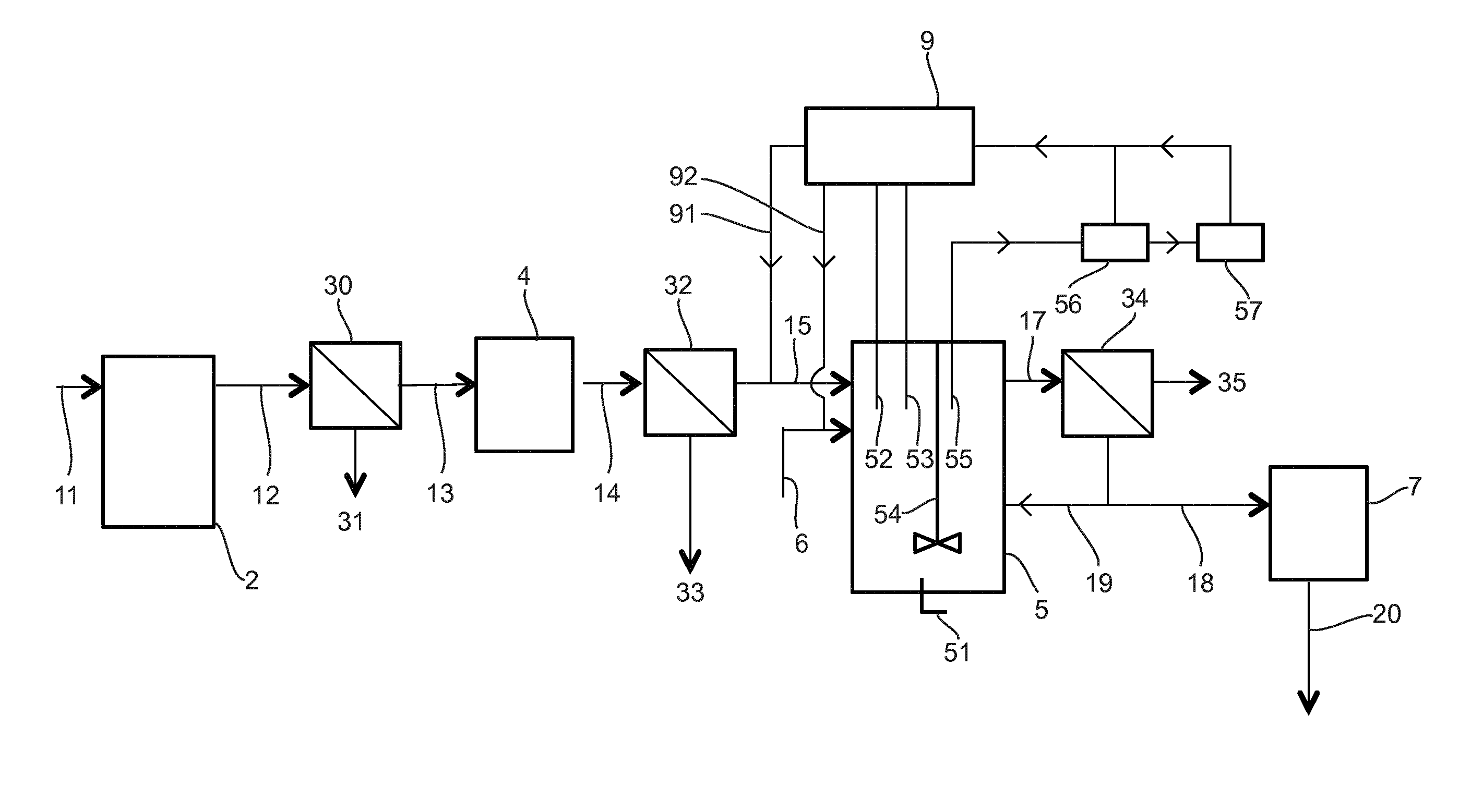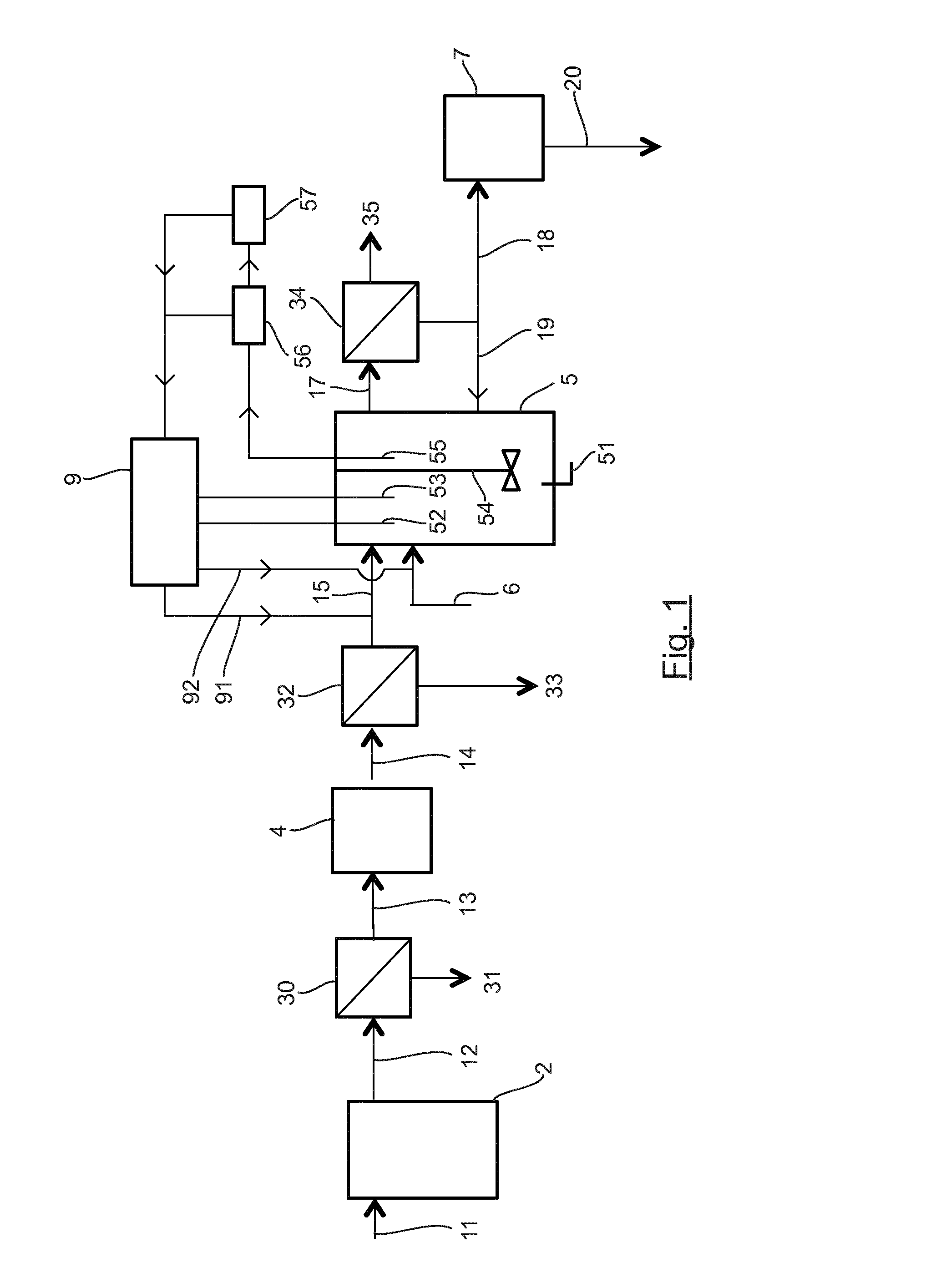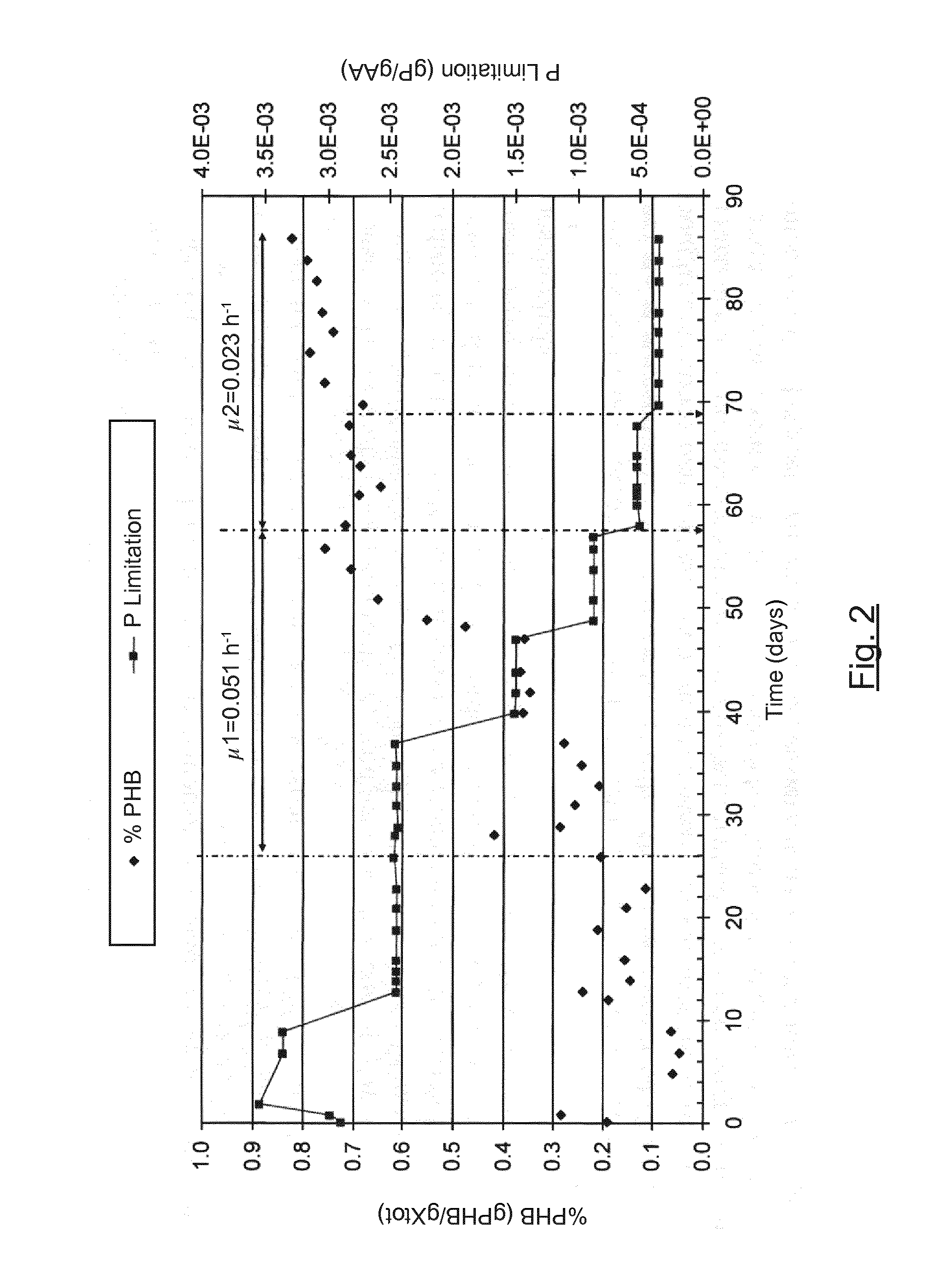Method for producing polyhydroxyalkanoates by microorganisms
a technology of polyhydroxyalkanoates and microorganisms, which is applied in the direction of water treatment parameter control, water/sludge/sewage treatment, moving filter element filters, etc., can solve the problem of nutritional or electron acceptor limitation or lack of intracellular growth requirements, competition in substrate consumption, and dilution of the final pha per biomass ratio obtained
- Summary
- Abstract
- Description
- Claims
- Application Information
AI Technical Summary
Benefits of technology
Problems solved by technology
Method used
Image
Examples
example 1
One Stage PHA Production System to Valorise Industrial Effluents by the Method of the Invention
[0130]With reference to the FIG. 1, a water treatment plant for the implementation of the method of the invention is disclosed. FIG. 1 shows a diagram or an outline of how the method of the invention works and is not limitative of how the apparatus must be spatially organized.
[0131]An industrial effluent of any type 11 enters in a VFA production unit 2. The VFA production unit is a tank wherein VFA are produced by any method known by any person skilled in the art like thermal hydrolysis, oxidation or acidogenic fermentation. The effluent 12 is therefore enriched in VFA. This VFA-rich effluent 12 enters in a liquid-solid separator 30 wherein suspended solids are discarded from the VFA-rich effluent thus producing a clarified VFA rich effluent 13 and a suspended solid stream 31. Liquid-solid separation can be performed by any conventional method: settling, membrane filtration, flocculation a...
example 2
One Stage PHA Production System to Valorise Industrial Effluents by the Method of the Invention
[0145]Two open culture systems have been seeded by two different activated sludges coming from a wastewater treatment plant. These open culture systems are similar to the one described in example 1 except the fact that no VFA unit and no P-precipitation unit are provided. Both cultures have been operated under similar conditions. A 5 L bioreactor was operated as a chemostat in order to sustain a cultivation process to carry out the method of the invention.
[0146]The VFA-rich effluent consists of an acetic acid solution and the P-source stream of a phosphate solution. The cell content of polyhdroxybutyrate PHB, a type of PHA, produced is calculated by the ratio of the weight of PHB stored in cells to the weight of the total biomass (Xtot) in the biological reactor. The P / C limitation is calculated by the ratio of phosphorus consumed to the weight of acetic acid (AA) consumed in the biologic...
example 3
Two-stage Water Treatment Plant for the Implementation of the Method of the Invention
[0156]An embodiment of a two-stage PHA production unit integrated in a wastewater treatment plant is outlined at FIG. 5. It is important to note that a wastewater treatment plant can also integrate a one-stage PHA production unit. FIG. 5 shows a diagram or an outline of how the method of the invention works and is not limitative of how the apparatus must be spatially organized.
[0157]Wastewater 100 enters in a settler 101 wherein primary sludge 110 and water to be treated are separated. The water to be treated 102 is first subjected to a conventional and biological treatment step 103, by activated sludge for instance. The biologically treated water 104 enters in a second settler 105, wherein the treated water 107 is separated from the secondary sludge 106. The treated water 107 can be then optionally submitted to a tertiary disinfection treatment 108 in order to produce a disinfected treated water 10...
PUM
| Property | Measurement | Unit |
|---|---|---|
| molar ratio | aaaaa | aaaaa |
| molar ratio | aaaaa | aaaaa |
| P/C molar ratio | aaaaa | aaaaa |
Abstract
Description
Claims
Application Information
 Login to View More
Login to View More - R&D
- Intellectual Property
- Life Sciences
- Materials
- Tech Scout
- Unparalleled Data Quality
- Higher Quality Content
- 60% Fewer Hallucinations
Browse by: Latest US Patents, China's latest patents, Technical Efficacy Thesaurus, Application Domain, Technology Topic, Popular Technical Reports.
© 2025 PatSnap. All rights reserved.Legal|Privacy policy|Modern Slavery Act Transparency Statement|Sitemap|About US| Contact US: help@patsnap.com



